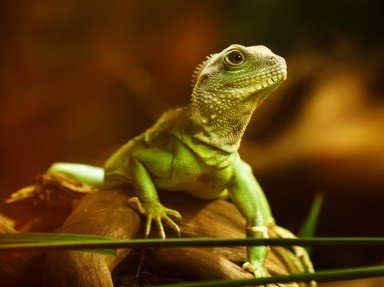Quiz Answer Key and Fun Facts
1. The Komodo dragon, the largest living species of lizard, is found in the wild solely on the Indonesian island Komodo.
2. Among the names that the natives of Komodo Island have for Komodo dragons is 'buaya darat'. How does that translate?
3. The Draco genus of agamid lizards live in the trees and subsist on insects, using membranes connected to their ribs to glide distances up to 60 meters! What are they more commonly known as?
4. There are only three species within the Draco genus.
5. All the known species of bearded dragons fall within the Pogona genus.
6. Bearded dragons are only found on one continent in their natural habitat. Home to many unique species, which continent is it?
7. By what name is Physignathus cocincinus also known?
8. The Chinese water dragon can take what kind of action when feeling under threat?
9. Apart from the obvious feature that its name describes, what can the frill-necked dragon do that comparatively few other lizards can do?
10. The frill-necked dragon is native to which country, that chose it to grace the back of its 2-cent coin (until 1991)?
Source: Author
reedy
This quiz was reviewed by FunTrivia editor
guitargoddess before going online.
Any errors found in FunTrivia content are routinely corrected through our feedback system.

